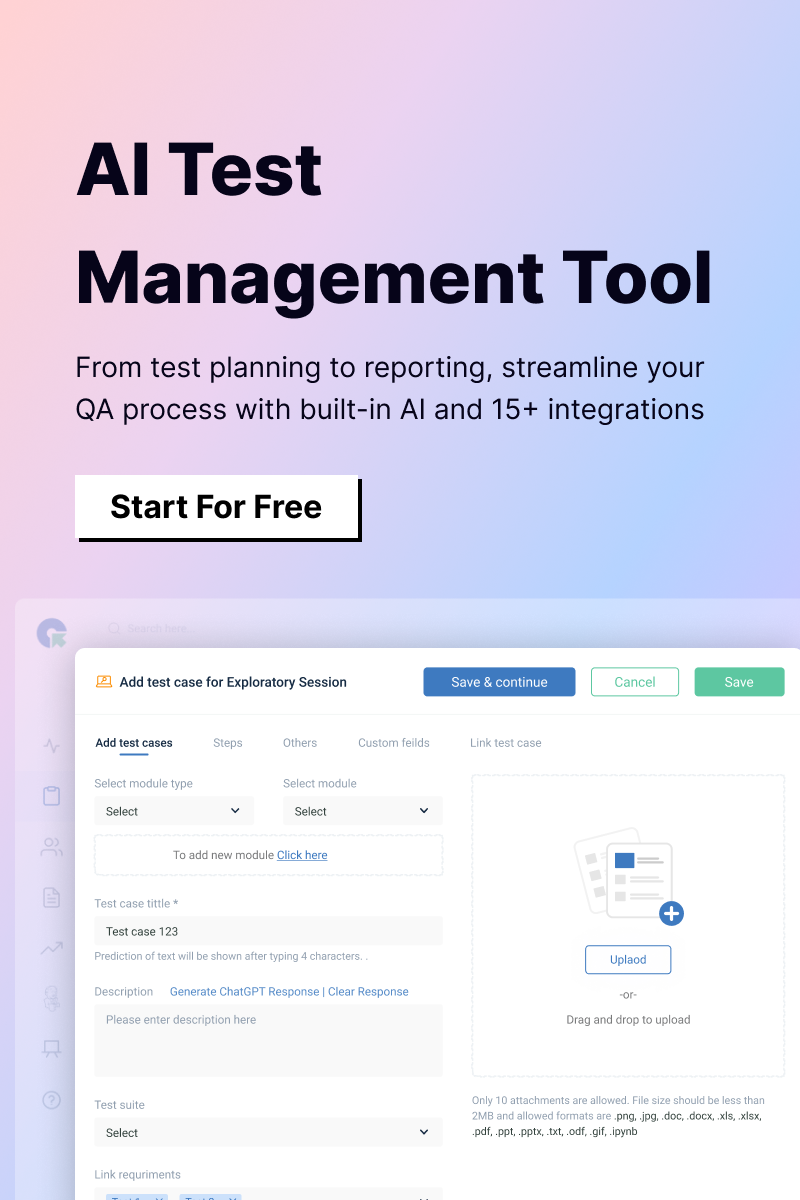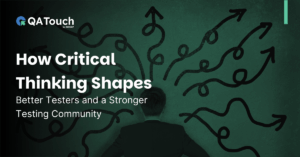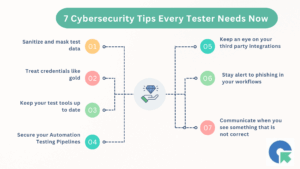Scrum is a framework used to create and maintain complex products. This guide can define Scrum. It includes scrum’s roles, events, artifacts, and the laws that bind them all together. Ken Schwaber and Jeff Sutherland, who also developed and provided the Scrum Guide, created Scrum. They support the Scrum Guide as a group.
Scrum Master
A scrum master is a coach and a mentor who ensures that the team is familiar with the scrum framework and all its guiding principles, values, and practices. The scrum team members work with the scrum master to coach and guide the team through the scrum framework.
Scrum masters are the leaders of the scrum, a straightforward agile structure centered on time-boxed iterations known as sprints. As facilitators, scrum masters are the mentors to the rest of the team.
The Scrum Handbook uses the phrase “servant leaders.” A good scrum leader upholds the scrum philosophy, and its fundamental ideas while remaining flexible and open to opportunities for the team to automate specific tasks.
What Does A Scrum Master Do?
Scrum Masters utilize their unique skill set to do critical work that helps the Scrum Team and the organization as listed below.
The Scrum Master
Helps the Scrum Team:
- The scrum team benefits from coaching its members in self-management and cross-functionality. Spend your time adding high-value features that reflect the Meaning of Done.
- Encourage the removal of roadblocks to the Scrum Team’s progress.
- Ensure every Agile event happens, is productive, and is finished in the allotted amount of time.
Helps the Product Owner:
- Learn effective techniques for defining product goals and managing the product backlog. Allow the scrum team to appreciate the value of brief and uncomplicated product backlog items.
- Plan products empirically in a complex setting.
- As the organization implements scrum, assist it by facilitating stakeholder cooperation as necessary or desired by directing, instructing, and coaching the stakeholders.
- Remove barriers that hinder clients and scrum teams by encouraging an empirical approach to complex work and helping stakeholders and employees understand it.
Learning Opportunities For Scrum Masters
To succeed as a Scrum Master, you must take multiple positions depending on the situation. The Scrum Master is in charge of developing scrum under the Scrum Guide by assisting everyone in the Scrum Team and the organization to comprehend Scrum theory and practice.
They contribute to the success of the Scrum Team by helping it improve its working practices within the Scrum framework. Scrum Masters are true leaders who provide the Scrum Team and the larger organization with few services.
We have put together a series of courses to help you, the Scrum Master, be more effective and better support your team and organization:
Professional Scrum Master
You will gain a thorough understanding of Professional Scrum, an agile mindset, and the responsibilities of the Scrum Master in the Professional Scrum MasterTM course. You collaborate with other students in teams as you learn through a combination of instructor-led and activity-based methods in this course.
Professional Scrum Trainers (PSTs) bring their own stories and experiences as Scrum Masters to the classroom and use their expertise as professional trainers to deliver the material in their distinctive manner.
The outcome is a stimulating, enjoyable learning experience where you will gain a profound understanding of Scrum theory and principles, the responsibilities of the Scrum Master, and the significance of each component of the Scrum framework.
Professional Scrum Master™ II
You can learn more about the responsibilities of the Scrum Master in the Professional Scrum MasterTM II course. You can also explore the difficulties that Scrum Masters encounter, learn how to deal with them by using the Scrum principles and values to support the Scrum Team, and go in-depth on how to support the Scrum Team, Product Owner, and organization.
You will learn the stances that define a practical Scrum Master in this advanced course. Additionally, you will learn relevant techniques and abilities that will help you have the right kinds of discussions and how to use these techniques to improve as a Scrum Master and foster an environment where agility can flourish.
Professional Scrum Facilitation Skills
Scrum Masters will learn how to choose the best techniques for various situations, develop a facilitation mindset, and enhance their facilitation skills in the Professional Scrum Facilitation SkillsTM course.
It will help them resolve problems more successfully, promote transparency, and develop a sense of shared understanding. You can expand your toolkit of agile practices as you gain proficiency with various facilitation techniques. Numerous common Scrum-related scenarios are covered in the course.
To improve communication between your Scrum Team, stakeholders, and customers during the upcoming team meeting or Scrum event, you will create and take home your own “plan” for facilitation.
Professional Scrum™ with Kanban
Experienced Scrum Masters and other Scrum practitioners can learn how to apply Kanban practices in the context of Professional Scrum in the Professional ScrumTM with Kanban course.
You will learn the significance of flow and acquire the practical skills necessary to implement Kanban practices to improve the efficiency of Scrum Teams through theory, case studies, and hands-on exercises. You will have a better understanding of how to apply good Kanban within a Professional Scrum environment, as well as what good Kanban looks like.
Professional Scrum Product Owner
To better support them and the other members of your Scrum Teams, you will investigate and learn about the product owner’s responsibilities in the Professional Scrum Product OwnerTM course.
You will learn about the crucial role the Product Owner plays in bridging strategy and agile product management to produce valuable products during the course. You will learn several product ownership techniques throughout the course that you can apply to support and mentor your product owner.
The Professional ScrumTM with User Experience training teaches Scrum Masters how to combine the User Experience (UX) specialization with what they already know about the effectiveness of self-managing, cross-functional teams. It will allow you to plan learning/discovery/design work, assist Developers in learning about the customer, and still produce a “Done” increment each Sprint.
By observing how Scrum and UX align and integrate to create cross-functional teams, you will also learn how to incorporate product discovery techniques into sprints and how to balance the product discovery work with the product delivery work. Combining design and delivery will enable you to provide more value and achieve better results.
Scaled Professional Scrum
In the Scaled Professional ScrumTM course, Scrum Masters learn about and apply the Nexus framework while developing a set of skills that can be used to assist their teams in overcoming obstacles when scaling scrum beyond a single Scrum Team. You will collaborate in a Nexus throughout the course to plan and model a scaled product development project.
In this case, study-based course typical scaling difficulties are discussed, along with more than fifty strategies for overcoming them. Some of these techniques are supplementary methods, while others draw on your knowledge of the scrum.
Professional Agile Leadership Essentials
Scrum Masters frequently work with other leaders in the Professional Agile Leadership EssentialsTM course to gain a practical understanding of how to support, mentor, and coach your team(s) to foster greater agility. You will gain a thorough understanding of the part that leadership plays in establishing the specifications for a successful agile environment.
This workshop will teach you how to create and support your Scrum Teams to get better results and how to spearhead the cultural and behavioral shifts your company needs to make to benefit from an agile product delivery approach.
Professional Agile Leadership™
Evidence-Based Management:
Scrum Masters are frequently joined by product owners, coaches, and consultants in the Professional Agile LeadershipTM – Evidence-Based ManagementTM course, where you will learn how to lead your teams towards consistently improving customer outcomes, organizational capabilities, and business results.
You will learn what EBM is and how to apply the framework to set clear goals and measures through a series of exercises. By shifting the conversation away from measuring progress solely through team performance metrics and towards a focus on customer-centricity and improving customer outcomes, you will learn strategies that support a more agile mindset.
Scrum Master VS. Product Manager
In this overview of Agile Product Management, we advise that the more involved a product manager is with the development team, the better. This involvement should be similar to that of a product owner who defends the needs of the client and the “why” of the product.
When participation transforms into tasking, the “how” for a team, there is a problem. Even when done with the best of intentions, this utilization mentality tends to conceal issues like flaws, hand-offs, and unknowns. Scope, schedule, and quality are more likely to be locked in when procedure and scope are combined. That’s a terrific way to fail.
The scrum master and product owner, who play two separate but frequently combined roles on a scrum team.
Scrum Master VS. Project Manager
The scrum master’s non-technical (or non-agile) counterpart is the project manager. The “how” of completing tasks and resolving workflow issues through procedure and facilitation is heavily emphasized in these positions. So, do you need both? Most likely not.
Both a traditional project manager and a scrum master are responsible for helping their team’s complete tasks, but they approach this responsibility very differently. The project manager plans team meetings, sets and oversees deadlines and milestones, and provides updates on the status of the project. However, they operate more traditionally as managers and do so from a position of authority.
The agile master helps the team streamline and enhance how they carry out their goals. Ideally, they work together.
Conclusion
When considering hiring a scrum master, the following factor stands out: Do this only if your company is invested in the scrum and committed to the methodology. The aforementioned roles have numerous ways to manage a development team, but a scrum master can only be successful with complete buy-in to scrum.
Your entire organization can experience significant benefits with a scrum master assisting each team in managing their process. Along with consistently delivering value to customers, which is the primary objective of the scrum methodology, teammates and managers will have more time to concentrate on what they do best. Kyle from sales can ring that damn bell, developers can write their best code, and product managers can concentrate on strategy.












